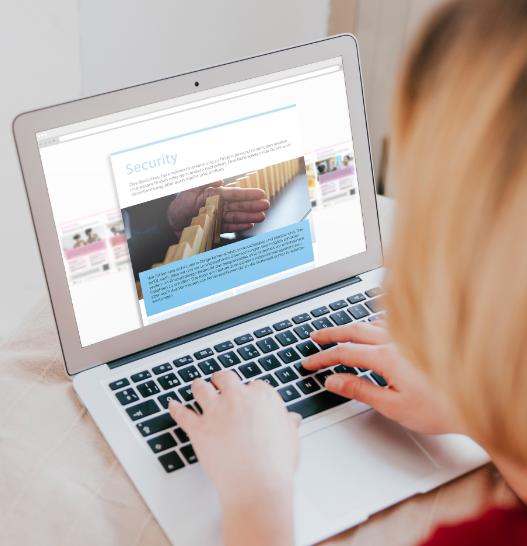What exactly are UX testing methods? What types of methods are there for UX testing? How do the different types differ from each other? Why is the right choice of method so incredibly important for your own product and how do you unerringly decide on the right method?
In our basic terms article on the topic of “UX Testing Methods”, we briefly and precisely clarify the above questions and thus want to give you an overview of the diverse world of usability and user experience testing methods.
Definition of UX Testing Methods:
UX Testing methods are different ways to evaluate a user interface with the right group of users in a specified use environment in terms of usability and user experience. This evaluation happens with the intention of subsequently adjusting the design of the product to specifically improve usability and user experience.
You can get deeper insights into what UX testing is in our basic terms article “What is “UX Testing“”.
As always, when you have different paths to choose from, you’re spoiled for choice. Which path leads to the desired goal? How do I get to the goal without detours if possible. The same applies to the selection of the right methods.
We divide the methods into qualitative and quantitative methods and clarify the respective characteristics of both groups. We also show you the advantages and disadvantages of moderated and non-moderated methods. The focus of your project also plays a role: do you want to evaluate user behavior or do you want to ask for user opinions? Depending on the focus, one and the same method can result in different evaluation efforts.
One and the same method can be used both quantitatively and qualitatively. The decisive factor here is how many users and how intensively you want to test. For qualitative research, a method is then taken with relatively fewer participants, but more intensive follow-up surveys. Accordingly, the methods we use for the respective subgroups often belong to both camps.
For example, a usability and user experience test conducted with many participants can deliver quantitative results, but with a smaller user group and many follow-up questions at interesting points it can also deliver very qualitative data.
Quantitative UX testing methods:
The methodology: testing is done with many users under the same and very structured conditions. Interview questions do not deviate from the protocol and thinking out loud by users is usually not required here. Instead, you want to get the desired result from a large number of people. The number of users should be a minimum of 5 for qualitative tests, and a minimum of 20 users is recommended for quantitative studies. (source)
Suitable for: Quantitative methods are suitable for collecting data on the basis of which usability and user experience can be measured and evaluated. Usability problems of a product can also be found quickly and efficiently with this type of method. Comparative studies (for example, against competing products) also require quantitative testing. If you want to test ROIs, quantitative methods should also be used.
What comes out of it: At the end of quantitative Usability and User Experience Testing there are percentages or statistics that provide statements about user behavior. For example, it is possible to determine the percentage of participating users who were able to perform a certain task without errors or to obtain the average time on task, i.e. the time spent by users on a work step.
When in the development process are quantitative methods useful? Whenever “how much(s)?” is asked. Especially at the beginning and during the final evaluation, quantitative methods are very useful.
Qualitative UX testing methods:
The methodology: Often, few users (e.g. 6) are asked in depth about their own user experience, feelings or needs here. Asking questions at interesting points is very important here. Rigid questionnaires, on the other hand, are counterproductive. Speaking out loud about thoughts during use can also provide deeper insights about users.
Suitable for: Qualitative methods are suitable for gaining deeper insights into user behavior and feelings. In other words, you learn the “why” behind certain actions and gain insights into the subjective feelings of individual users. Qualitative methods provide essential data for design decisions based on iterative user testing.
For example, if you want to find out quite early in the development process what exactly users do and why they do it, qualitative methods such as an on-site visit, i.e. the on-site observation of a person in the work environment followed by a follow-up survey, are ideally suited to obtaining a detailed overview.
Product ideas and solution approaches can also be tested for acceptance or rejection by users using qualitative methods such as a focus group. So if you want to know whether the problem solution you have in mind, which your product offers, is potentially suitable for the user group, you can resort to qualitative methods.
What comes out of this: single or many insights that can significantly influence your product design. In addition, you have gained important insights and a deeper understanding of your user group.
When in the development process are qualitative methods useful? In the iterative improvement loops of your product or at the beginning of product design. Whenever you ask “why do users do this?”.
Moderated vs. non-moderated Usability and User Experience Testing methods:
In moderated methods, a usability and user experience researcher is on site during testing. The researcher defines the procedure. A script can be used, but also free questions by the moderator are possible (depending on the method).
In moderated tests, it is possible for the researcher to influence the user. The advantage of this is that questions can be asked if the task is unclear at the beginning. However, it is also possible to ask questions if the conversation or the action reveals unexpected information. This results in a great gain of information. A moderated method does not always have to take place on site, but can also happen remotely.
Non-moderated methods can be online questionnaires or recorded website tests where users are given a task but solve it without a moderator. Here, the sessions can also be recorded.
For example, websites or apps can be tested without moderation to rule out influence by the researcher.
Why are UX testing methods so important for your product?
The right method produces the right data you need to make design decisions (for qualitative methods) or can provide important statistics and percentages about your product’s usability and user experience (for quantitative methods).
In both cases, the data is closely tied to the success of your product. UX testing methods allow you to make data-driven decisions to tailor your product to real users in the best possible way.
What can you do to find the right method for your project?
There are a variety of UX testing methods. In practice, a mix of different methods often proves to make the most sense. In order to find the right method for your project, you can contact an external partner who is familiar with Usability and User Experience Testing.
Choosing the right method is often not easy. Therefore, we would like to recommend our method assistant to you. Here you can make a pre-selection of Usability and User Experience Testing methods with a few questions: Click here to access our method assistant.
We would like to point out that you should only make a preselection here. Do you still have questions about this complex topic? That is all too understandable! In order to really find the right method for your product, a personal discussion is always necessary! Feel free to give us a call, or discuss with us in the comments.
Or hire a UX representative who is familiar with the methods and the different approaches and also your product. This person can then decide in the best possible way on the choice of methods and commission the execution externally.
You do not always have to stick rigidly to one method. A mix of methods is also conceivable, depending on the objective. However, the ideal number of participants may vary depending on the method and the objective of the testing.
You can find out which methods we offer here.
Conclusion
Usability and User Experience Testing methods always have the objective of evaluating the usability and user experience of a product or service with real users. Thereby, one mainly distinguishes between qualitative and quantitative methods.
To get valid data, you have to choose the right methods for your Usability and User Experience Testing. An internal unit or external consulting can help here. A mix of methods is also always conceivable.
Have you already come into contact with different methods? What is your special case?
Feel free to comment below this post or contact us directly via our contact form. We look forward to hearing from you!



